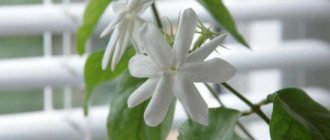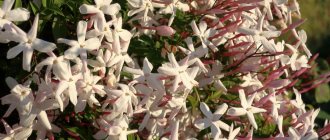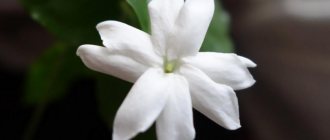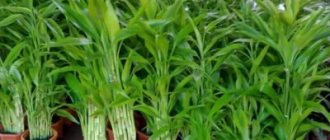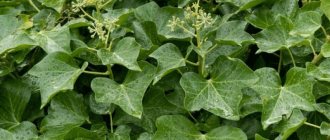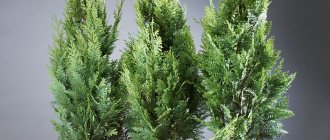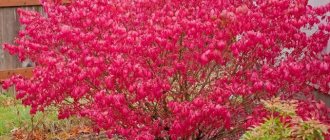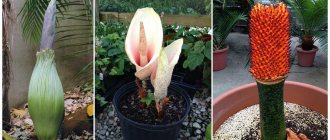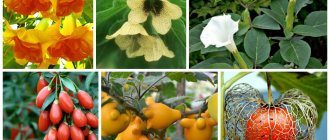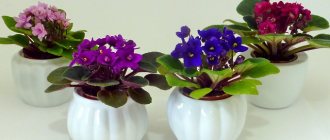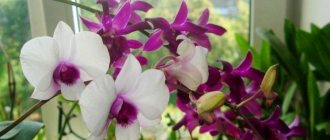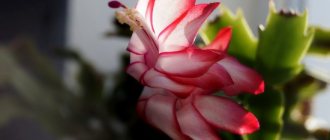The jasmine plant (Jasminum) is a member of the Olive family. This genus includes about 300 species. This culture can mainly be found in nature in the tropical and subtropical zones of Africa, Australia and Asia. One type of jasmine is found in the Mediterranean and South America. This culture is represented by shrubs and vines, which are deciduous and evergreen. The odd-pinnate or trifoliate leaf blades are alternate or oppositely arranged. Flowers grow at the top or sides of the plant; they can be solitary or collected in corymbose or umbellate inflorescences. The saucer-shaped corolla can be painted white, yellow, and less often pink. The cylindrical tube of the corolla has an open mouth. To prevent jasmine from being confused with mock orange, which is part of the Saxifraga family, it is also called “true jasmine.” However, these plants also have something in common, namely, the aroma of their flowers. This culture will feel great both in the house and in the winter garden. Jasmine is a beautiful flowering plant, most often it is hanging. The lower part of the bush becomes woody after a while, while the upper part is represented by thin shoots that may need support.
Choosing the optimal site for planting
Fluffy, crown or small-leaved jasmine can often be found in country gardens and cottages. In prevailing cases, jasmine is planted in the spring season, regardless of which subspecies has been chosen at the moment.
For healthy growth and formation of the plant, you should familiarize yourself with the main rules for planting and maintaining it:
- For rich flowering and impressive appearance, jasmine should be planted in a place protected from drafts, as they adversely affect the growth of this shrub. For jasmine, a well-lit place with plenty of direct sunlight will be more suitable.
- This shrub is best planted among flowers that are lilac or bright blue. For example, next to lavender or spur, jasmine will look very harmonious.
- Experts advise planting in the spring, however, this process can be done in the fall.
Flower diseases and pests
Since jasmine can be safely classified as a delicate plant, you need to understand that it is easily attacked by insects and diseases in the apartment. Of the pests, the flower most often suffers from mites, leaf weevils and aphids. To destroy them, it is necessary to remove the most affected areas, and treat the plant itself with the insecticide “Confidor”, “Aktara”, “Tanrek”.
Stephanotis or Madagascar Jasmine
In addition, jasmine can be affected by diseases. If rot or other problems appear, treatment must be started immediately. For this purpose, the fungicides “Abiga Pik”, “HOM”, “Vitaros”, “Acrobat” are used.
Important!
If jasmine diseases are not treated promptly, the appearance of the crop will begin to deteriorate, and then it may even die!
Correct disembarkation process
For the best growth of jasmine, it is necessary not only to carefully select the soil, but also to the planting process itself.
The photo shows the step-by-step procedure for planting it correctly:
- And although the shrub can grow successfully in any soil, it is better to choose soil that contains nutrients.
- Since the roots respond negatively to excess moisture, the plot of land that is located on a slight elevation should be chosen.
- Then you need to pour sand mixed with small pebbles into the hole. This layer will act as drainage. In the spring, you can add 40 g of nitrophosphate to the hole so that the plant grows faster.
- After planting the bush and compacting the soil, the plant is watered.
Mandatory care
In order for the garden to be decorated with fluffy, delightful jasmine, the plant requires regular care, namely:
- The first feeding must be done a year after planting the plant.
- For garden jasmine, manure and humus are necessary organic fertilizers. It should be borne in mind that fertilizing is carried out exclusively in water-diluted form in order to avoid burning of the root system.
- Emerging pruning should be carried out in the spring - during the vegetative state of the shrub.
- Long branches are cut off, and short ones are reduced by half. Every year, bushes are examined and damaged and diseased branches are removed.
The correct maintenance of home jasmine consists of bright, diffused lighting, consistent introduction of fertilizing into the soil, creation of high humidity, a six-month dormant period, and annual replanting of young and adult materials.
We recommend reading:
- Flowers for a flower bed blooming all summer until autumn: photo and name
- Fern and its types: characteristics, features and propagation tips
- Autumn flowers in the garden: photos and names
The temperature regime is no less important, because if the flower is in a too warm room, it will grow remarkably and increase its green mass.
However, such a plant will not bloom. Only systematic ventilation will help correct such an incident.
Popular varieties
Indoor jasmine - home care
There are several main varieties of flowers that are grown at home.
Jasminum Beesianum
This is a representative of vines with 2-meter shoots, which are covered with small grooves on top. Active flowering begins in mid-May. The leaves are dark green, small, tapering towards the top, and arranged oppositely. The length of the leaf is 4-5 cm. The difference between this variety is its brighter appearance. Flowers are deep pink in color with a distinct fresh aroma.
The diameter of the blossoming bud reaches 3 cm
Jasmine (Jasminum Nudiflorum)
This species is distinguished by sparse leaves and graceful shoots. Weak branching is also noted. Another name is winter jasmine. The leaves of the flower are small, bright green. During the dormant period, the leaves completely or partially fall off. It blooms with yellow buds from January to April, the diameter of the flower reaches 3 cm.
Grandiflorum jasmine (Jasminum grandiflorum)
One of the largest jasmines. The height of the vine reaches 10 m. A distinctive feature is the bare shoots. The leaves are darker, elliptical in shape with sharp edges. Flowers are collected at the top in umbrellas. The plant can bloom in June, and this period will continue until October. The color of the flowers is white.
Jasmine officinale (Jasminum officinale)
A plant with thin and smooth branches that are decorated with leaf blades. On the front side the plates are bright green, and on the back side they are pale green. The leaves are elongated in shape, with pointed edges. The flowering period is observed in April. White flowers with long stalks appear from the buds.
Multifloral jasmine (Jasminum Polyanthum)
The multi-flowered species is presented with abundant branching. The height of the vine can reach 2 m. The oval-shaped leaves with a relief edging are arranged alternately. The leaf blade is dark green.
Note! It blooms from February to August with pink buds, which, when blooming, change color to snow-white. During flowering there is a strong aroma.
Low jasmine (Jasminum humile var. Glabrum)
In the wild, this plant is often found in China. It grows at an altitude of more than 1500 m. The species is represented by shrubs and evergreens. Bush with bare shoots and dark green leaf blades. There are umbellate inflorescences, which consist of fragrant flowers. The flowering period begins in June.
Bushes reach 2 m
